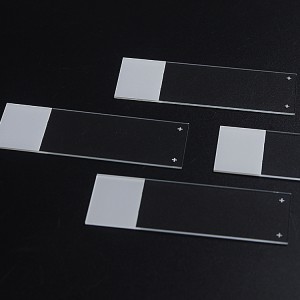How should one select microscope slides and coverslips for conducting research on a specific subject?
For conducting research work on any specified topic, choosing microscope slides and coverslips would depend upon multiple factors including optical characteristics of the material, mechanical strength and their compatibility with experimental conditions.
Material selection:
First of all, you have to select the right material based on your experiment’s needs. For instance, in case of electron microscopy studies need transparent or translucent materials that let less light scatter as well as reflect off them. Besides, you should choose materials which can withstand such treatments carefully since these include samples demanding long-term storage or special treatment (e.g., plasticization).
Thickness and refractive index:
The thickness as well as refractive index of slides and cover slips play an important role in imaging quality. Only some cover slips have been found to meet the exact standards of thickness and refractive index recommended. Therefore while selecting ensure that specific material meets required specifications besides using certified products where possible for standardization purposes.
Surface treatment and shape:
The surface of the coverslip should be made as smooth and bubble-free as possible for good image results. Blurry images will occur if there is irregular thickness or warping. Also, this means that different shapes of slides and coverslips may be required depending on whether it is a light microscope or an electron microscope.
Temperature stability:
In certain applications such as electron microscopy, slides and cover slips must remain stable even at high temperatures. For instance, a method involving Parafilm as adhesive can stay firm up to 60 degrees Celsius making it highly useful for direct casting of electron microscopy resins.
Compatibility testing:
Pre-experiments in small scale evaluating the biocompatibility and functionality of the material can be done before actual application; however, these tests are aimed at ensuring that there is no reaction between the selected material with the specimen or other experimental equipment.
Therefore, finding appropriate slides and coverslips for specific research needs involves considering various factors including material properties, environment conditions, and experimental requirements.
Which fixatives are best used in improving chromosome preservation quality when fixing cell samples?
Ethanol (70%) has been shown to be an effective fixative improving quality of chromosome preservation by fixing cell samples. Cell structure remains intact by rapidly freezing cells using 70% ethanol which then preserves them from damage (reference). Furthermore fixed cells with 70% show more uniform DNase I hypersensitive sites than those obtained from traditional methods using isolated nuclei treated with micrococcal nuclease indicating that Ethanol fixation provides better native chromosomal preservation.
On the other hand, CABS buffered saline mixed solution plus 99% ethanol (CABS+E) was also applied to cell preservation during flow cytometric DNA analysis where it had lower coefficients of variation compared to buffered saline alone but higher resolution has been reported over BS alone However this method is only good for short-term preservation purposes as well as flow cytometric analysis but not for long-term or detailed chromosome structure studies.
Thus, while there are many types of fixatives that can be used to preserve cell samples as such, 70% ethanol has the best effect on improving the quality of chromosome preservation because it can keep the chromosome structure intact and functional.
References
1. D. Whitlon and P. Baas. “Improved methods for using glass coverslips in cell culture and electron microscopy..” Journal of Histochemistry and Cytochemistry (1992). 875 – 877.
2. J. Ramsey, G. Lindberg et al. “Comparison study of a multispectral zoom lens using standard and novel optical materials..” Applied Optics (2019). 5045-5049.
3. O. W. Richards, John H. Small et al. “Microscopy with Plastic Substitutes for Cover Glasses.” (1944). 59-62.
4. K. P. Norris. “Some observations on microscope cover-glasses..” Journal of the Royal Microscopical Society (1961). 287-98.
5. G. Grondin, G. Grondin et al. “A study of criteria permitting the use of plastinated specimens for light and electron microscopy..” Biotechnic & Histochemistry (1994). 219-34.
6. S. Belikov and L. Wieslander. “Improved preservation of chromatin structure in ethanol-fixed cells..” Nucleic Acids Research (1994).1928-9.
7. K. Alanen, Pekka J. Klemi et al. “A simple preservative for flow cytometric DNA analysis..” Cytometry (1989). 86-9.
Post time:2024-08-02





